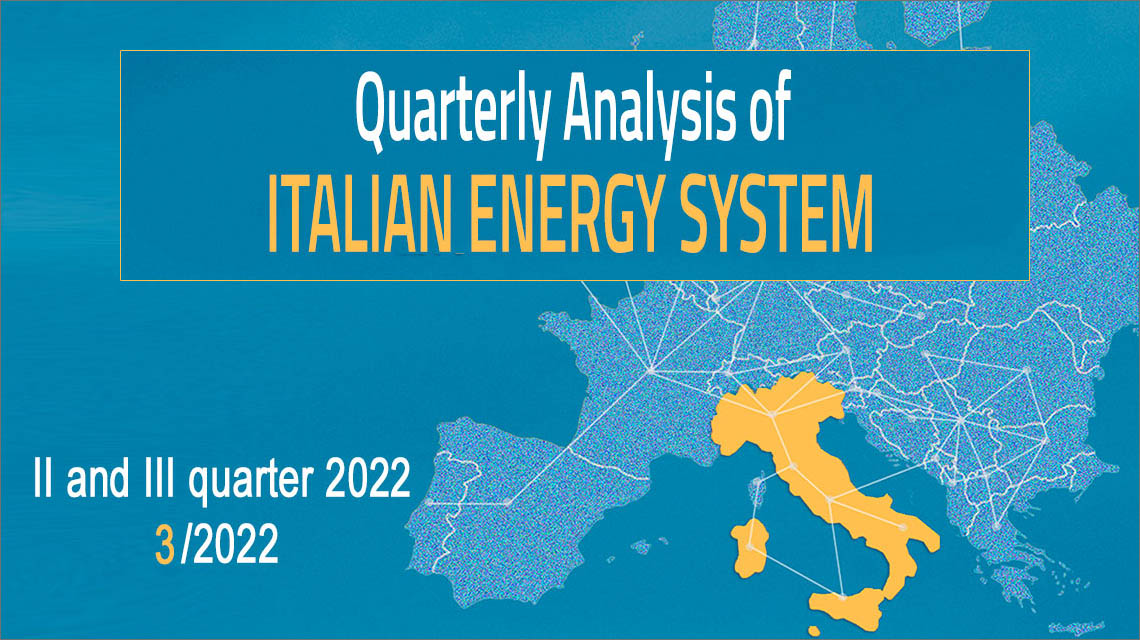Italian National Agency for New Technologies, Energy and Sustainable Economic Development

Energy: Italy, in 2022 energy demand decreased (-1,5%) while emissions grew by 2%
ENEA energy transition index at its lowest level on record
Despite stationary energy consumption, CO2 emissions grew by 6% in the first nine months of 2022. Over the whole of 2022 energy consumption is expected to drop by about 1.5%, while CO2 emissions are estimated to increase by more than 2%, due to the increased use of fossil fuels (between January and September, oil +8%, coal +47%, renewables -11%). These are some of the data included in the last ENEA Quarterly Analysis of the Italian energy system, which are among the factors explaining the sharp deterioration of the ENEA-ISPRED energy transition index (-60% in the 3rd quarter).
“ISPRED index’s fall reflects in particular the worsening of the decarbonisation component, which is now at its lowest value on record”, explains Francesco Gracceva, the coordinator of the ENEA Quarterly Analysis. “Within this scenario – he adds – achieving the European target of reducing emissions by 55% by 2030 would require an average annual reduction of almost 6% over the next eight years”.
As regards energy security, the Quarterly Analysis highlights a worsening of gas system adequacy “In the upcoming winter particular attention should be given to the capacity of gas system to cope with a situation of high demand: as a matter of fact, if Russian gas flows drop to zero (they have already dropped below 20% of total imports in the first nine months of 2022 and close to zero in October and November), it would be very difficult to meet a daily gas demand similar to the one recorded in the worst cold wave of the last five years”, adds Gracceva.
With respect to energy prices, Italian gas price increased similarly to the European average, while electricity prices increased approximately twice the EU average, particularly for industrial consumers. “Compared to 2021, for a firm with medium-low gas consumption electricity and gas prices increased by 60% and 120% in the first half of 2022, while for the whole of 2022 both prices have exceeded the previous historical highs by well over 50%”, highligths Gracceva.
In the first nine months of the year the strongest reduction of energy consumption has been recorded in the industrial sector (up to a remarkable -15% in the third quarter), while transport energy consumption kept recovering from the record lows caused by the pandemic in 2020, even though its growth rate is clearly decreasing (+12% in the nine months but +4% in the third quarter). CO2 emissions growth is almost entirely attributable to the energy industry, that is the power and refinery sectors.
“An important signal coming from these data is that energy consumption decreased more than what would have been expected from the dynamics of its key drivers, i.e. GDP, industrial production, mobility and climate indicators (heating and cooling degree days). A similar trend was also recorded throughout Europe, whose energy demand dropped by 0.7% in the first nine months of the year", explains Gracceva, "Clearly - he adds – this trend has been determined by the unprecedentedly high energy prices, which forced many energy-intensive companies to stop their activities. In the coming months it will be interesting to verify whether energy consumption can keep contracting as result not only of a contraction of industrial activity but as an effect of more virtuous energy saving behaviour".
In terms of primary energy sources, the first nine months of 2022 saw a significant growth of fossil fuels: oil consumption grew by 8%, approaching pre-pandemic values, while coal consumption grew by a remarkable 47% and at the end of the year is expected to be close to 2018 levels. On the contrary, natural gas consumption fell by 3% in the first nine months ( -8% in the third quarter), while renewables decreased by approximately 11% in any of the three quarters, negatively affected by the worst performance on record of hydroelectricity generation (25% less than the minimum of the last 15 years). The new all-time highs of wind and solar (+9% in the first nine months), with a 16.3% share of electricity demand on average in the nine months (and a peak of 21.7% in April), were not sufficient to offset the fall of hydro.
